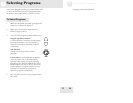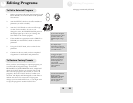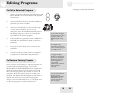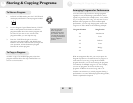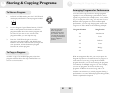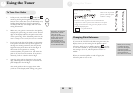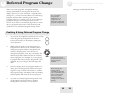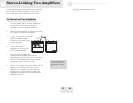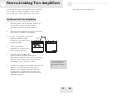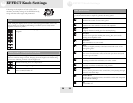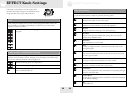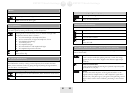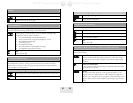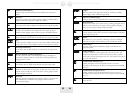
8 Deferred Program Change
25
When you switch programs, the Spitfire normally
changes immediately to the program shown on the
display. However, in some situations—especially when
playing live—you may want the ability to scroll through
program numbers while remaining in the current
program setting. For example, let’s say you’re soloing in
a program that gives you strong distortion and fat
chorus. If you want to continue playing while you scroll
up to a program that provides a clean rhythm sound,
you’ll have to be in deferred program-change mode.
Enabling & Using Deferred Program Change
1. As you turn on the Spitfire, hold down one or both
of the Program Up/Program Down buttons.
Letters will scroll by on the display, spelling the
word “deferred.”
2. While in PLAY mode, use the Program Up or
Program Down button or the VALUE knob to
change the program number. The Spitfire will
remain in the program it was in before you
changed the program value. Also, the display will
flash the digit that is different from the currently
selected program. For example, if you are playing
in program D5 and scroll up to program D7, the 7
will flash. If you scroll up to F2, both digits will
flash.
3. Once the display shows the program number you
desire, press the Program Up and Down buttons
together or step on both footswitches to confirm
the program change. The display will stop flashing
and the Spitfire will switch to the new program.
4. To return to normal program-change mode, turn
off the Spitfire and turn it back on without
holding down any buttons or footswitches.
Defe
r
red
p
rogram-
change mode is
especially useful when
you’re performing and
want to switch easily
between a rhythm
setting and a lead
setting as you continue
playing.
You may also use the
optional footswitches to
change program
numbers.
See “Arranging
Programs for
Performance” in
chapter 6 for an
alternative to deferred
program-change mode.
8 Deferred Program Change
26
This page intentionally left blank



